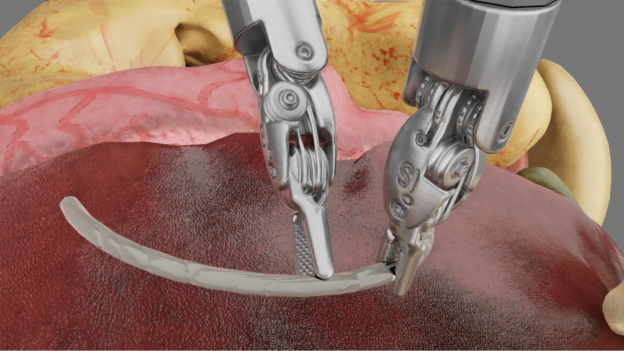- The world is facing a growing challenge of water scarcity, which is set to accelerate this century.
- While already in use in manufacturing and agriculture, digital twins could also be transformative for the water management industry.
- Already, case studies are emerging on how digital twins in water management can improve efficiency, saving clean water and improving services.
Flooding is now the most common natural disaster in the world. And while some areas are more prone to it than others, extreme weather — such as heavy rainfall and drought — and a growing population that will demand 25% more water by 2050 are straining global water resources. Nearly half of the global population already faces water scarcity, and a projected 40% shortfall in freshwater looms by 2030. Yet around 30% of drinking water is lost in distribution worldwide.
Efficient water management solutions are urgently needed — and digital twins may be able to help.
A digital solution to a growing problem
By creating a digital current —a continuous flow of real-time data and insights that help reshape how we manage water systems already today — digital twins could help to preserve water.
Digital twins can create virtual representations of real-world objects or systems that can be put through different scenarios and undergo different virtual conditions, to inform strategic and accurate data-driven decisions in real time without the need for costly physical testing. This allows companies to get invaluable insights into past, present and future scenarios.
For example, a digital twin of a city river and the surrounding built environment would allow local authorities to simulate changes in water temperature, levels and flow rates, to help them understand flood risks better and develop the most appropriate countermeasures to ensure more efficient and sustainable water management.
Digital twins are not just a vital disaster response tool. They are a pillar technology in helping us design the water supply of the future.
—James Cole, Chief Innovation Officer, Cambridge Institute for Sustainability Leadership”
— James Cole, Chief Innovation Officer, Cambridge Institute for Sustainability Leadership
From digital flow to real-world impact
The Lushan Water Supply Company in China is leading the way, with digital twins revitalizing an outdated water system. Every day, the system provides 25,000 tons of water to Guling, a summer retreat in the UNESCO World Heritage site of Lu Mountain National Park.
Before the overhaul, Guling’s 1980s-built system struggled to meet current environmental protection and development standards and preserve the scenic landmark for future generations to enjoy.
Following other digital upgrades, Lushan Water Supply Company implemented a simulation software to create a digital twin of the waterworks. The digital twin analyzes efficiency levels and stimulates potential optimizations in real-time before they are applied in the real-world. By identifying improvements digitally, the company maximizes the potential for success while minimizing costs and operational disruptions. These innovations significantly reduce water loss and contribute to environmental preservation of the region’s iconic landscapes, safeguarding them for future generations.
The success of the Lushan Water Supply Company exemplifies how digital twin technology can enhance efficiency on a local scale. Yet, with urbanization rates skyrocketing, the need for scalable water-management solutions becomes increasingly urgent. Cross-sector collaboration will be necessary to tackle broader water-management issues at both local and global levels.
The Technical University (TU) Berlin is pioneering collaboration by creating a digital twin of a pump station in its Water 4.0 testing facility. Pump stations, designed to move water or sewage between locations, play a vital role in maintaining canal levels and water supply and managing sewage and floodwaters.
TU’s digital pump station integrates essential data on design, operation and maintenance from its physical counterpart. Through partially autonomous systems, the digital twin can detect issues like clogged pumps and clear them before they cause a blockage. Rather than a simple demonstration plant, this digital twin is based on a fully functional, small-scale industrial plant equipped with advanced controls, sensors and actuators. The university uses the digital twin as its virtual innovation sandbox, where new optimization concepts and scaling solutions are developed and tested every day, pushing the boundaries of water management innovation.
Lushan Waterworks and TU Berlin’s digital pump prove the transformative potential of digital twins in water management. By reducing maintenance time by up to 30% and maintenance costs by up to 25%, digital twin technology can have a meaningful impact on water management. The insights gained by digital twins can drive even greater impact on a larger scale.
Tapping into the future with digital twins
Digital twin technology is a scalable, innovative solution to ensure a responsible, efficient and sustainable use of the world’s most precious resource, both locally and globally.
Whether it’s managing water for cities, entire rivers, or even oceans, this digital current will drive the future of water management.
In the near future, large cities could soon rely on digital twins to monitor and optimize water distribution systems, making them not only more resilient but also more cost-effective and sustainable to ensure a reliable water supply for millions.
By providing the foresight needed to ensure efficient, responsible and sustainable use of water — and providing digital insights — we can get ahead of the issue of water scarcity, and ensure people worldwide have access to clean water.
Digital twins can help us ensure that our most vital resource, water, remains protected for generations to come.
https://www.weforum.org/stories/2024/11/why-digital-twins-might-transform-the-world-of-water-management/





